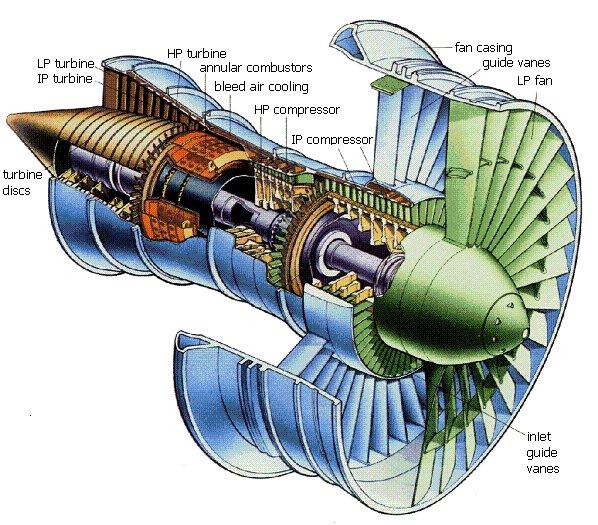|
|
|||||||||||||
|
Christchurch and District Model Flying Club |
|||
|
EDF thoughts and a clue (first in a series) from Kevin Ross
Having recently experienced an adrenalin rush by investing in an Electric Ducted Fan model (which obviously I have to fly at non CDMFC sites—is this right Boss? Ed) it generated a simple but nevertheless relevant comparison with my career in civil jet transport aircraft. Many of you will have travelled on a modern jet transport aircraft. As it lines up for take off and the pilot advances the thrust levers, you experience a formidable rate of acceleration during the take off role. In rough terms a typical 230 seat Boeing B757 weighing 100 tons all up will reach V2 (take off commitment) of 150 mph in 25 secs. To achieve that acceleration, the combined thrust of the 2 jet engines is up to 85000 lbs equivalent to about 40 tons. What makes up that 40 tons of thrust? An obvious answer would be the expanding hot gasses resulting from burning all that jet fuel but the answer is more involved. In fact all modern jet turbine engines for civil transport aircraft have a final turbine stage which absorbs a massive amount (approximately 75%) of that hot gas to drive a huge cold air fan at the front of the engine. Only the remaining 25% is pure hot gas thrust.
So, in actual fact, the majority of the take off thrust is derived from 2 huge cold air ducted fans. So you could say that this method of producing thrust has much in common with a model jet EDF. In the following diagram you can see the large cold air ducted fan at the front of the engine. The intake for the main jet engine just behind the cold fan and the hot gas output at the rear are relatively small. PS – think 75/25 and remember I’m setting the questions next January! |
|||
|
[Home] [Chairman's Chatter] [Editorial] [Profile #2] [Who flies what] [Club Meetings] [Steering] [How to...] [Kevin Ross] [What we are missing] |

